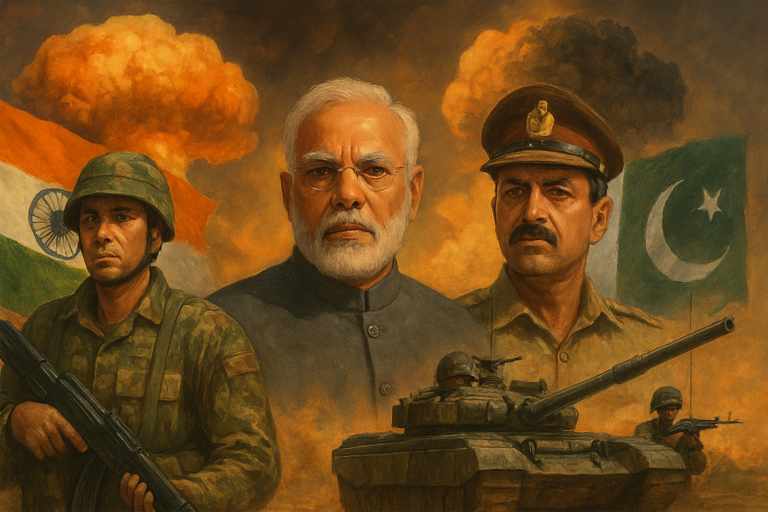Introduction: India-Pakistan Nuclear
The long-standing rivalry between India and Pakistan has once again taken a dangerous turn, reigniting fears of a nuclear confrontation. On May 28, 2025, tensions surged after a deadly militant attack in Indian-administered Kashmir. India swiftly blamed Pakistan, escalating the situation through a series of retaliatory strikes—including one alarmingly close to Pakistan’s military headquarters. While the conflict has not yet spiraled into full-scale war, the incident underscores how volatile relations between two nuclear-armed neighbors can quickly become.
This article explores the background, the latest developments, and the global implications of renewed India-Pakistan nuclear tensions.
The Kashmir Trigger: Catalyst for Crisis
Historical Background
Kashmir has been the epicenter of India-Pakistan hostility since both nations gained independence in 1947. The region, claimed by both countries in full but controlled in parts, has witnessed multiple wars and countless skirmishes.
May 2025 Attack
The current crisis began with a deadly insurgent attack in Kashmir, resulting in multiple casualties. India immediately pointed the finger at Pakistan-based groups, claiming that Islamabad continues to harbor and support militants targeting Indian forces and civilians.
India’s Aggressive Retaliation
India’s response was swift and assertive. According to the Washington Post, Indian forces launched precision strikes inside Pakistani territory. One strike reportedly landed dangerously close to a sensitive military base near Rawalpindi—Pakistan’s army headquarters.
This bold move marks a shift in India’s security doctrine. Under Prime Minister Narendra Modi’s leadership, New Delhi has adopted a more aggressive stance, emphasizing swift retribution for cross-border attacks.
Nuclear Brinkmanship: A Frightening Reality
The Doctrine of Deterrence
Both India and Pakistan are nuclear powers with stated doctrines of “no first use” and “full spectrum deterrence,” respectively. Despite these doctrines, experts argue that the risk of miscalculation remains alarmingly high.
What Makes This Escalation Different?
- Proximity of the Indian strike to Pakistan’s strategic military site.
- India’s assertive rhetoric, signaling a new threshold for response.
- Absence of trust and direct communication between the two militaries during the conflict.
The Role of International Diplomacy
According to U.S. intelligence sources, it was Washington’s behind-the-scenes diplomacy that helped de-escalate tensions. Senior American officials reportedly reached out to both New Delhi and Islamabad, urging restraint and facilitating backchannel dialogue.
China and other global powers also expressed concern, highlighting the broader implications of a nuclear flashpoint in South Asia.
The Psychological Warfare of Nuclear States
Despite the presence of nuclear weapons serving as a supposed deterrent, the reality is far more fragile. Experts warn that:
- False alarms, misinterpretations, or rogue actions could spark unintended war.
- Political pressure in both nations makes de-escalation increasingly difficult.
- Militant provocations could act as wildcards, setting off chain reactions.
What Lies Ahead?
This latest episode in the India-Pakistan saga is a stark reminder of how easily their adversarial relationship can escalate into a full-blown crisis. Though outright war was narrowly avoided, the potential for future conflict remains high unless structural changes are made in bilateral relations.
Key Takeaways:
- Increased backchannel communication is essential.
- Stronger international diplomatic mechanisms are needed.
- Regional cooperation must be prioritized to combat terrorism without mutual suspicion.
Conclusion
The May 2025 crisis has placed South Asia—and the world—on alert. India and Pakistan’s nuclear capabilities, coupled with deeply rooted mistrust and reactive policies, make this one of the most dangerous rivalries in modern geopolitics. As the dust settles, the international community must not treat this de-escalation as the end of the matter, but rather a wake-up call for serious diplomatic engagement and peacebuilding efforts.

